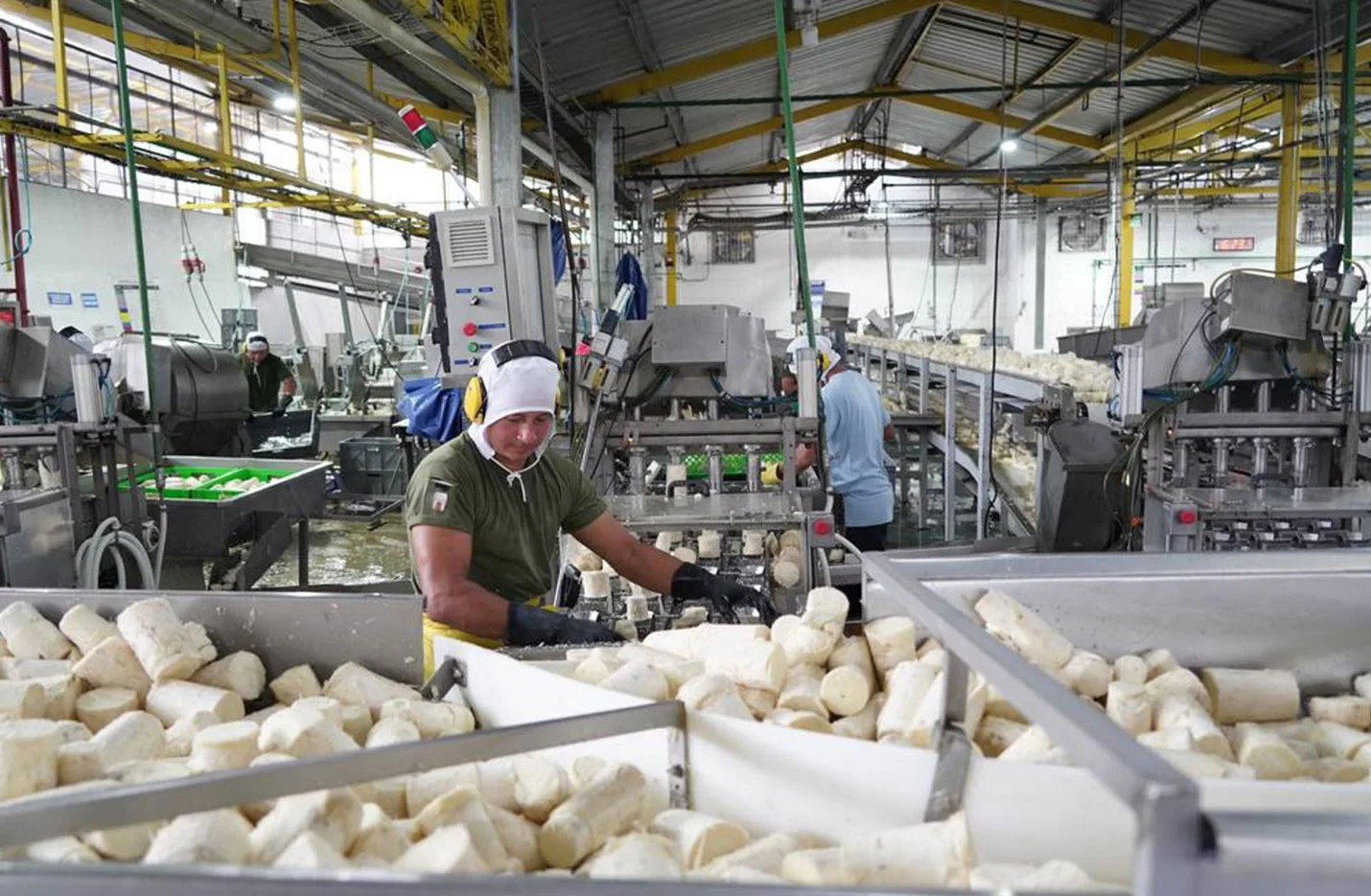Recent research shows that T-cell and herd immunity may play big roll in curbing Covid-19

In many cities, such as New York, people are resuming some aspects of their pre-pandemic lives.
By David Wallace-Wells
Over the six months of the COVID-19 pandemic, you would never have gone broke betting on the disease continuing to surprise — on its apparent ability to grow weirder, less predictable, and less consistent, at times by the day. What first looked like a simple respiratory disease produced, over time, disorienting, diverse damage — in lungs, in hearts, in brains.
respiratory disease produced, over time, disorienting, diverse damage — in lungs, in hearts, in brains.
Scientists are familiar with this kind of variation; they often call it “heterogeneity.” And perhaps the strangest aspect of it, to a novice observer trying to piece together an understanding of the disease from the sidelines, is that most of them aren’t really surprised by it. “People always want to think about this virus as very special, but it’s not,” Florian Krammer, the prominent microbiologist at the head of Mt. Sinai’s Krammer Laboratory, told me last month. The disease was more dangerous than others, he said, in part because it was new, but it wasn’t all that strange.
Eric Topol, the head of the Scripps research institute, told me that he based his understanding of SARS-CoV-2, the disease that causes COVID-19, on everything we know about SARS-CoV-1 (more commonly known as just SARS), and found that “anchoring” to be conceptually useful. One reason the new coronavirus may look, to you and me, so much stranger than the last one is simply that this disease managed to get wildly out of control. SARS-CoV-1 infected fewer than 9,000 people, which is a small data set in which to observe real variation. SARS-CoV-2 has infected 20 million. That’s a much bigger field in which viral curiosities can grow. Going forward, as more people get the disease, “we should expect such mysteries to build,” as Ed Yong wrote recently in an exemplary account at The Atlantic of the strangeness of our immune response. “The worse the pandemic gets, the weirder it will get.”
Over the last few months, coronavirus contrarians and those hoping for more optimistic news have spent a fair amount of time focusing on two particular areas of apparent weirdness. The first is how the heterogeneity of the disease’s spread affects the threshold of herd immunity — the point at which enough people in a community have been exposed to the disease that it can no longer really spread. If that point arrives sooner than was projected early in the pandemic, when a rough, conventional-wisdom calculation held that herd immunity would require between 60 percent and 80 percent of a community to be exposed, it would mean that the “end” would be coming much sooner, too — and perhaps that some hard-hit places, like New York City, had already reached a point of relative safety.
The second is how the heterogeneity of the immune response affects disease outcomes across a population: who gets mildly sick, who gets very sick, who recovers, and who dies. Some of those looking for good news have been especially focused on the heterogeneity of the T-cell aspects of the immune response, because a handful of studies have found that a quite significant number of people unexposed to the coronavirus nevertheless exhibited what are called “cross-reactive” T-cell immune responses to the disease. In other words, you didn’t necessarily need to catch COVID-19 for your T-cells to know how to fight it, because previous exposure to similar coronaviruses (chiefly the common cold) had already taught your immune systems how to respond to this one.
 In both cases, the picture remains somewhat uncertain; all research into COVID-19 and SARS-CoV-2 is very young. But the early returns suggest that while the maximalist interpretation of each hypothesis is not very credible — herd immunity has probably not been reached in many places, and cross-reactive T-cell response almost certainly does not functionally immunize those who have it — more modest interpretations appear quite plausible. It may well be the case that some amount of community protection kicks in below 60 percent exposure, and possibly quite a bit below that threshold, and that those who exhibit a cross-reactive T-cell immune response, while still susceptible to infection, may also have some meaningful amount of protection against severe disease.
In both cases, the picture remains somewhat uncertain; all research into COVID-19 and SARS-CoV-2 is very young. But the early returns suggest that while the maximalist interpretation of each hypothesis is not very credible — herd immunity has probably not been reached in many places, and cross-reactive T-cell response almost certainly does not functionally immunize those who have it — more modest interpretations appear quite plausible. It may well be the case that some amount of community protection kicks in below 60 percent exposure, and possibly quite a bit below that threshold, and that those who exhibit a cross-reactive T-cell immune response, while still susceptible to infection, may also have some meaningful amount of protection against severe disease.
Let’s look at herd immunity first. At the beginning of the pandemic, the basic rule of thumb was that herd immunity would only be reached with more than 60 percent of a given population exposed through either infection or vaccination. This is the figure given by a very basic calculation: 1-1/R0 (where R0 is the number of new cases expected to be produced by the arrival of a single infected person in an otherwise unexposed community). The first suggestion I came across that the threshold might be considerably lower was from Karl Friston, a British neuroscientist who specialized in mathematical modeling of brain function, and was developing models to compare the different trajectories of the disease in different countries. “The answers are sometimes counterintuitive,” he told The Guardian at the end of May:
“For example, it looks as if the low German fatality rate is not due to their superior testing capacity, but rather to the fact that the average German is less likely to get infected and die than the average Brit. Why? There are various possible explanations, but one that looks increasingly likely is that Germany has more immunological “dark matter” — people who are impervious to infection, perhaps because they are geographically isolated or have some kind of natural resistance. This is like dark matter in the universe: We can’t see it, but we know it must be there to account for what we can see.”
Later, in an interview with UnHerd, a sort of intellectual dark web magazine devoted to “free thinking” in science, Friston suggested that the truly susceptible portion of the population was certainly not 100 percent, as most modelers and conventional wisdom had it, but a much smaller share — surely below 50 percent, he said, and likely closer to about 20 percent. The analysis was ongoing, he said, but, “I suspect, once this has been done, it will look like the effective non-susceptible portion of the population will be about 80 percent. I think that’s what’s going to happen.”
The “dark matter” line was widely derided by epidemiologists, who didn’t seem to think that there was anything mysterious or inexplicable about the divergent experiences of various countries or communities. And in recent weeks, papers modeling herd-immunity dynamics given heterogeneous disease spread have been found similarly wanting, with epidemiologists describing them as being too abstract, built on almost arbitrary assumptions about the population dynamics of COVID-19, rather than assessments of how the disease was actually spreading in the real world. Indeed, last week one of the leading modelers, Gabriela Gomes, suggested the entire area of research was being effectively blackballed out of fear it might encourage a relaxation of pandemic vigilance. “This is the very sad reason for the absence of more optimistic projections on the development of this pandemic in the scientific literature,” she wrote on Twitter. “Our analysis suggests that herd-immunity thresholds are being achieved despite strict social-distancing measures.”
It is true, as Gomes suggests, that the possibility of lower effective herd-immunity thresholds has not taken center stage in the public-health discussion surrounding the coronavirus pandemic. Nevertheless, the possibility that heterogeneity in pandemic spread would to some extent lower the herd-immunity threshold has recently begun to get more serious mainstream attention. At the end of June, Kevin Hartnett wrote in the science magazine Quanta that the math was a bit “trickier” than the 1-1/R0 implied, particularly because the actual R figure — the number of new infections produced by every case — shifted naturally over time.

Nurses work at a drive-thru testing site for COVID-19 at North Shore University Hospital in Manhasset, N.Y.
Then, a few weeks ago, The Atlantic’s James Hamblin gave the hypothesis its most high-profile airing, citing several researchers and modelers, including Gomes, Tom Britton, and Marc Lipsitch, suggesting that heterogeneity could bring herd immunity much faster than 60 percent. Indeed, Gomes suggested, herd immunity could happen with as little as one quarter of the population of a community exposed — or perhaps just 20 percent. “We just keep running the models, and it keeps coming back at less than 20 percent,” she told Hamblin. “It’s very striking.” Such findings, if they held up, would be very instructive, as Hamblin writes: “It would mean, for instance, that at 25 percent antibody prevalence, New York City could continue its careful reopening without fear of another major surge in cases.”
But for those hoping that 25 percent represents a true ceiling for pandemic spread in a given community, well, it almost certainly does not, considering that recent serological surveys have shown that perhaps 93 percent of the population of Iquitos, Peru, has contracted the disease; as have more than half of those living in Indian slums; and as many as 68 percent in particular neighborhoods of New York City. And though there is some risk of herd-immunity “overshoot,” as Carl Bergstrom and Natalie Dean warned back in early May while contemplating the Swedish no-lockdown strategy and the risks of rushing to herd immunity, overshoot of that scale would seem unlikely if the “true” threshold were as low as 20 or 25 percent.
But, of course, that threshold may not be the same in all places, across all populations, and is surely affected, to some degree, by the social behavior taken to protect against the spread of the disease. As with so many aspects of the coronavirus, we probably err when we conceive of group immunity in simplistically binary terms. While herd immunity is a technical term referring to a particular threshold at which point the disease can no longer spread, some amount of community protection against that spread begins almost as soon as the first people are exposed, with each case reducing the number of unexposed and vulnerable potential cases in the community by one. This is why, even without interventions like social distancing, mask-wearing, and shelter-in-place, you would not expect a disease to spread in a purely exponential way until the point of herd immunity, at which time the spread would suddenly stop. Instead, you would expect that growth to slow as more people in the community were exposed to the disease, with most of them emerging relatively quickly with some immune response. Add to that the effects of even modest, commonplace protections — intuitive social distancing, some amount of mask-wearing — and you could expect to get an infection curve that tapers off well shy of 60 percent exposure.
Indeed, that is more or less what was recently found by Youyang Gu, to date the best modeler of pandemic spread in the U.S. In an analysis last updated August 5, Gu wrote that the disease was spreading much faster in June and July than it had been at the outset of the disease (in the period often referred to as “exponential growth”), with about 450,000 estimated new cases every day in June and July, compared to about 300,000 in March and April. But in that data appeared to be something of a silver lining:
“Looking at the data, we see that transmissions in many severely impacted states began to slow down in July, despite limited interventions. This is especially notable in states like Arizona, Florida, and Texas. While we believe that changes in human behavior and changes in policy (such as mask mandates and closing of bars/nightclubs) certainly contributed to the decrease in transmission, it seems unlikely that these were the primary drivers behind the decrease. We believe that many regions obtained a certain degree of temporary herd immunity after reaching 10-35 percent prevalence under the current conditions. We call this 10-35 percent threshold the effective herd immunity threshold.”

Experts say that Covid-19 will become more manageable as more data becomes available.
In his write-up, Gu is careful to call this phenomenon “effective herd immunity,” not simply “herd immunity,” and in a follow-up on Twitter, he cautioned again that he did not mean to imply that the natural herd-immunity level was as low as 10 percent, or even 35 percent. Instead, he suggested it was a plateau determined in part by better collective understanding of the disease and what precautions to take. This may not be a game changer in the big picture, but given that Gu estimates national prevalence as just below 20 percent (i.e., right in the middle of his range of effective herd immunity), it still counts, I think, as encouraging — even if people in hard-hit communities won’t truly breathe a sigh of relief until vaccines arrive.
I say that for two reasons, one short term and one medium term. First, if Gu’s analysis is correct, in those hardest-hit places there may already be some amount, and perhaps a significant amount, of community-level protection — meaning that even if they experience further outbreaks this fall, COVID-19 will likely spread more slowly, with a lower risk of a New York-in-April kind of disaster. And second, it would make it much easier for the first wave of vaccines to truly knock the pandemic back. If community protection is only achieved after 80 percent of the population has been exposed through infection and vaccination, such an achievement would require a very effective vaccine (which immunized nearly everyone it was administered to, not the just the 50-60 percent efficacy of the flu vaccine); an efficient and thorough rollout (whereby everybody would get access to it pretty quickly); and little anti-vaxx resistance in the particular community (with only a few people, at most, refusing to take it). If you can get real protection starting at 35 percent, it means that even a mediocre vaccine, administered much more haphazardly to a population with some meaningful share of vaccination skeptics, could still achieve community protection pretty quickly. And that is really significant — making both the total lack of national coordination on rollout and the likely “vaccine wars” much less consequential.
The T-cell story is similarly encouraging in its big-picture implications without being necessarily paradigm-changing. The headline findings have been quite eye-popping to those who assumed this coronavirus was truly “novel,” in the sense of encountering a susceptible population with no preparation whatsoever for combating it: At least 20 percent of the public, and perhaps 50 percent, had some preexisting, cross-protective T-cell response to SARS-CoV-2, according to one much-discussed recent paper. An earlier paper had put the figure at between 40 and 60 percent. And a third had found an even higher prevalence: 81 percent.
These numbers suggest their own heterogeneity — that different populations, with different demographics, would likely exhibit different levels of cross-reactive T-cell immune response. But the interpretation of these findings has varied, too, in part because there has been, to this point, no experimental work to track exactly what protection, if any, T-cells could offer. In the absence of that work, scientists can only speculate and theorize based on the population data.
The most optimistic interpretation of the data was given to me by Francois Balloux, a somewhat contrarian disease geneticist and the director of the University College of London’s Genetics Institute. Balloux isn’t a pandemic pollyanna — he called COVID-19 a “super wicked problem” for which there was no get-out-of-jail-free card waiting in the research (“no straightforward solution, no silver bullet,” as he put it). According to him, a cross-reactive T-cell response wouldn’t prevent infection, but would probably mean a faster immune response, a shorter period of infection, and a “massively” reduced risk of severe illness — meaning, he guessed, that somewhere between a third and three-quarters of the population carried into the epidemic significant protection against its scariest outcomes. He told me that he believed the distribution of this T-cell response could explain at least some, and perhaps quite a lot, of COVID-19’s age skew when it comes to disease severity and mortality, since the young are the most exposed to other coronaviruses, and the protection tapers as you get older and spend less time in environments, like schools, where these viruses spread so promiscuously.
In theory, Balloux told me he believed it was also possible that the heterogeneous distribution of T-cell protection also explains some amount of the apparent decline in disease severity over time within countries on different pandemic timelines — a phenomenon that is more conventionally attributed to infection spreading more among the young, better treatment, and more effective protection of the most vulnerable (especially the old). The decline is quite striking, and probably deserves more attention than it has been given to date, as those following the pandemic closely within the media (and without) have fallen into simplistic debates about whether cases and deaths are rising, and whether they will continue to. As cases exploded in the U.S. earlier in the summer when the country came out of lockdown, some rise in deaths was inevitable. But even as we have seemed to reach a second peak of coronavirus deaths, the rate of death from COVID-19 infection has continued to decline — total deaths have gone up, but much less than the number of cases. Going back to Youyang Gu’s analysis, what he calls the “implied infection fatality rate” — essentially an estimated ratio based on his modeling of untested cases — has fallen for the country as a whole from about one percent in March to about 0.8 percent in mid-April, 0.6 percent in May, and down to about 0.25 percent today. In other words, at the population level, the lethality of the disease in America has fallen by about three-quarters since its peak. This is, despite everything that is genuinely horrible about the pandemic and the American response to it, rather fantastic.
Of course, death is not the only worrisome outcome of COVID-19, which has caused concerning complications that can extend for at least months, even in many whose cases were considered “mild.” But a fourfold decline in lethality is quite significant, and very much worth celebrating, whether or not doing so encourages a relaxation of vigilance — the same concern that governs public-health caution over the question of herd immunity. For his part, Gu sees the decline in lethality largely as a matter of age, with most of the recent spread among the young. Balloux cautions that he is speculating, but suggests another possibility: that there may be some possible “mortality displacement,” whereby the most severe cases show up first, in the most susceptible people, leaving behind a relatively protected population whose experience overall would be more mild, and that T-cell response may play a significant role in determining that susceptibility.
That, again, is Balloux’s interpretation — the most expansive assessment of the T-cell data offered to me. The most conservative assessment came from Sarah Fortune, the chair of Harvard’s Department of Immunology — though she did allow that there would likely be some T-cell response effect. “Clearly, there is some cross-protection for other seasonal coronaviruses,” she told me, meaning not just T-cell mediated response but also protection via antibodies or innate immunity. (Indeed, a recent paper found a cross-reactive antibody response as well, though only in a much smaller share of the population, about 5 percent.)
But Fortune cautioned not to assume that cross-protection was playing a significant role in determining severity of illness in a given patient. Those with such a T-cell response, she told me, would likely see a faster onset of robust response, yes, but that may or may not yield a shorter period of infection and viral shedding. She was also skeptical that T-cell response could explain much of the age skew of the disease, pointing out that the very young haven’t yet had much exposure to other coronaviruses, and appear to have a quite robust protection against severe COVID-19; and that while it is the case that exposure tapers over time, it isn’t the case that 90-year-olds have much less exposure to the common cold than 70-year-olds, and yet appear much, much more at risk with COVID-19.
Most of the scientists, doctors, epidemiologists, and immunologists I spoke to fell between those two poles, suggesting the T-cell cross-immunity findings were significant without necessarily being determinative — that they may help explain some of the shape of pandemic spread through particular populations, but only some of the dynamics of that spread.
Florian Krammer, the Mt. Sinai microbiologist, suggested it was probably premature to talk about the implications of T-cell cross-immunity, given how little beyond its prevalence we understood. But he told me he believed, in the absence of that data, that T-cell cross-immunity from exposure to previous coronaviruses “might explain different disease severity in different people,” and “could certainly be part of the explanation for the age skew, especially for why the very young fare so well.”
In theory, a few scientists suggested, it might also partially explain some of the divergent experiences of nations around the world.
When I asked Eric Topol, the head of Scripps, whether it was a plausible hypothesis that T-cell immunity could significantly protect you from severe disease, he replied, “Yeah, oh yeah!” He told me he’d been tested for T-cell response — not all that easy for most of the public — “and I was wishing, when I had my test, that I had it, so I’d have a fighting chance if I get [the virus], when I get it.” T-cell cross-immunity, he said, “is very likely playing a significant role. Why are some people asymptomatic? Why do some people who get the infection have such a mild response — so mild they hardly get sick? Is it because of the T-cell activation? I think it’s part of this story. It may even be the main explanation of why people never develop symptoms, or why they might have such mild symptoms.” He added, “That’s a leading hypothesis for sure.” At the population level, he said, “When only antibody data are presented, we are missing a very big part of the story.”
Then, on August 4, a group of 26 researchers, including the lead authors of the “20 to 50 percent” research finding, published a new paper in Science documenting both the origins and the shape of that T-cell cross-reactive immune response. To the lay reader, the paper is a tangle of detail about the immune system, but the headline finding was quite clear and explicitly stated: that preexisting T-cell response came primarily via the variety of T-cells called CD4 T-cells, and that this dynamic was consistent with the hypothesis that the mechanism was inherited from previous exposure to a few different “common cold” coronaviruses.
What was even more striking was not what they found but what they believed those findings might ultimately illuminate. “This potential preexisting cross-reactive T-cell immunity to SARS-CoV-2 has broad implications,” the authors wrote, “as it could explain aspects of differential COVID-19 clinical outcomes, influence epidemiological models of herd immunity, or affect the performance of COVID-19 candidate vaccines.”
But they also didn’t want to get ahead of themselves. “This is at present highly speculative,” they cautioned.
_____________________
David Wallace-Wells is an American journalist known for his writings on climate change. He wrote the 2017 essay “The Uninhabitable Earth”, which he later expanded into the 2019 book The Uninhabitable Earth.
Credit: New York Magazine

















